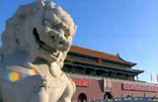Why Li Keqiang Index remains important benchmark
Updated: 2015-06-06 16:53
(chinadaily.com.cn)
|
|||||||||||
Governments across the globe use a mix of different methods to analyze economic trends, growth and earmarking of funds.
China, like rest of the world, also takes help of various tools to understand and plan the nation's economic policies. But one framework that stands out in China is the Li Keqiang Index.
When Li Keqiang, the current prime minister, was Provincial Committee Secretary in Liaoning from 2004 to 2007 he began focusing on markers that were closely tied to country's growth, such as consumption of electricity by manufacturers, volume of goods carried by railways, and balance sheets of financial institutions.
By combining these indicators with common indexes and methods, he came up with a completely different tool. Britain's weekly newspaper termed it the Li Keqiang Index in 2010.
His framework immediately won praise from world's research institutions, who said that the index gives a much better picture of the economic trends, supports historical data and shines an impartial light on the nation's economy.
Although the Chinese economy has come a long way since 2010 and is projected to continue on its path to a new development stage, the basic principles behind the index remain unchanged as it still retains strong practical value, according to a commentary on London Post website.
To attest why the index will stand the test of fast-developing China, the website lists some of the reasons:
The contribution of country's primary sector (farming, forestry and fishing) is small and falling while the secondary sector (manufacturing) continues to drive the economic engine. Its contribution was 50.9 percent between 1990 and 2010, 15.1 percent higher than that of the tertiary sector. On average, the manufacturing contributed 5.2 percent to economic growth, 1.5 percent higher than that of the tertiary sector, said the Post.
Since it's the factories, the plants and manufacturing hubs that consume most electricity, power consumption is closely related to the pace of economic development.
China produces most of its natural resources, such as coal and mineral, mainly in the central and western areas and processes them in eastern areas. This means railways play a major part in transporting the goods and keeping the economic engine running.
But it's not just production and railways that are closely tied to growth. Capital investment is another important wheel. This is why loans and financial institutions provide a much better picture of economic trend, according to the Post.
Related Stories
Chinese economy can achieve 'soft landing': OECD report 2015-06-04 09:36
Economy will suffer if reform fails, tycoon says 2015-06-04 07:55
High-rise economy boom in Shanghai 2015-06-02 09:05
'Time to face problems' as economy slows 2015-05-30 09:54
Chinese-funded railway to create jobs, boost economy: Kenyan president 2015-05-28 10:54
Questions most asked about China's economy 2015-05-27 16:18
Today's Top News
Rescuers right ship to speed up recovery
VW says China OKs bigger stake in venture with FAW
60% of Chinese youth OK with premarital sex: survey
Guangzhou Evergrande appoints Scolari to replace Cannavaro
65 bodies found, more than 370 still missing
Ex-FIFA executive detailed bribes in 2013 secret guilty plea
Beijing 'shocked' at Nazi comparison by Philippines
Ship disaster in Yangtze River: Roundup of updates
Hot Topics
Lunar probe , China growth forecasts, Emission rules get tougher, China seen through 'colored lens', International board,
Editor's Picks

|

|

|

|

|

|






